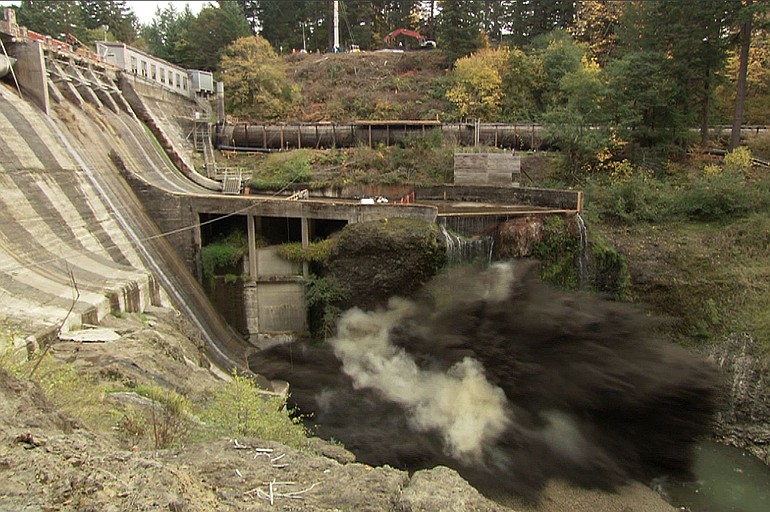WHITE SALMON — Davis Washines watched in awe, then bowed his head. He wiped tears from his eyes.
The sight of the White Salmon River rushing freely through the base of Condit Dam — released for the first time in 98 years Wednesday by a ground-shaking detonation of 700 pounds of dynamite — set off a rush of emotion for Washines and dozens of others watching on a live video feed, just a short walk from the blast site.
Washines, a member of the Confederated Tribes and Bands of the Yakama Nation, said he was overwhelmed. He thought of his brother and other tribal leaders who worked to achieve a free-flowing White Salmon River but never lived to see the day it happened.
When the torrent of water was finally unleashed, he said, it reminded him of wild horses running free.



